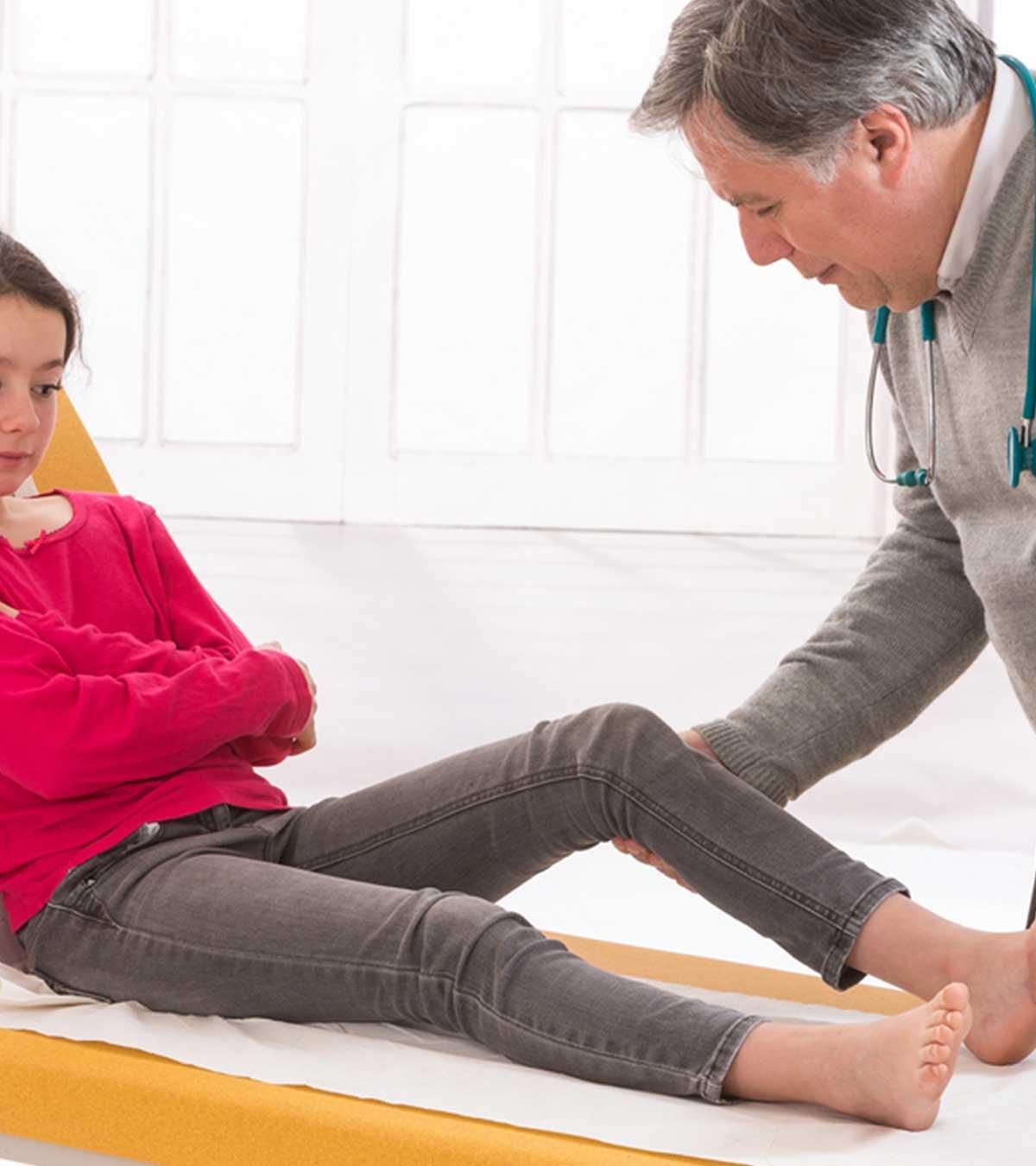
Viral infections in children are common as children have low immunity. Viruses are tiny infectious agents that invade and multiply inside a living organism, and viral infections are caused when the host cells of the body react to viruses.
While there are several types of viral infections, such as chickenpox, AIDS, common cold, influenza, and dengue, common childhood viral infections are respiratory diseases (1). Respiratory syncytial virus (RSV) is considered the most common cause of lower respiratory infections in children. A systematic analysis conducted by multiple institutions found that the global burden of RSV-associated acute lower respiratory infection was 33.0 million in 2019.
Viral infections can damage the cells or cause changes in cellular functions, and they may also affect different tissues and organs in the body. Some viruses may even cause interference in cell division, leading to cancers.
In this post, we give you the details about the common symptoms, diagnosis, treatment, home remedies, and prevention of viral infections in children.
Key Pointers
- Fever, body aches, lack of appetite, watery eyes, headaches, coughing or sneezing, diarrhea, vomiting, and skin rashes are typical symptoms caused by viral infections.
- Viruses can spread through mosquito bites, contaminated needles, blood transfusion, infected food, polluted water, respiratory droplets, and sharing of needles.
- Some complications include bacterial infections, encephalitis, meningitis, and myocarditis, poliovirus-induced paralysis, and pneumonia.
- The treatment used for managing symptoms includes intravenous fluids, NSAIDs, antihistamines, lozenges, and nasal decongestants.
- Preventive measures include practicing cleanliness, avoiding contact with those who are ill and getting vaccinations against certain viruses.
Signs And Symptoms Of Viral Infection In A Child
Image: IStock
Fever in kids can be one of the common symptoms of a viral infection. The fever caused by viruses is called viral fever. Some viruses may cause a slight increase in body temperature, whereas others may cause a significant rise in temperature, which calls for immediate care.
The following signs and symptoms are also often seen in viral infections causing kids’ health issues (2):
- Body ache
- Tiredness
- Lack of appetite
- Watery eyes
- Headache
- Cough or sneeze
- Diarrhea
- Vomiting
- Skin rashes
These symptoms can vary depending on the virus that is responsible for causing the infection. Many of the viral infections are self-limiting and do not require special attention. However, this may depend on the viral load, and some viruses can cause severe infections, requiring hospitalization.
The type of virus and your child’s immunity may determine how often and how long the viral infections last. Some viral infections may resolve within a few days, whereas others may last longer. Viruses such as HIV stay forever in the body and continue to cause problems, while herpes viruses may remain inactive in the body and often reactivate and cause disease.
Causes Of Viral Infection In Children
Some viruses are highly contagious. Contracting viruses from infected people or animals can cause diseases. A few viruses are transmitted to humans through vectors such as mosquitoes or flies.
Viruses may spread through direct contact or the air. They may transmit to humans in the following ways (3) (4):
- Contaminated food and water (swallowing)
- Inhalation of respiratory droplets
- Blood transfusion
- Contaminated needles
- Vertical transmission or congenitaliA trait, condition, or disease existing right from birth (mother to child)
- Bites of insects, such as mosquitoes, flies, or ticks
Sharing needles can often cause diseases among teens who take drugs if the needles have been used by infected persons. Certain viruses such as herpes can be spread from kissing. Dengue virus, Zika virus, etc. are spread from infected people to healthy people through mosquito bites. Rabies viruses are spread through a bite or scratch from an infected animal.
Some viral infections, such as influenza, can be seasonal. For instance, from the below graph, it can be inferred that most of the viral activity peaked during December and February, followed by January and March. Other respiratory illnesses, such as rhinovirus and adenovirus infection, can also spread during the flu season.
Peak months of flu activity in the US across flu seasons (1982-1983 to 2021-2022)
Source: Flu Season; CDCAlthough children may come in contact with different types of viruses in their day-to-day life, it may not always lead to infection. The human body has a defense system against pathogens, including the epithelial cells of the skin that act as a physical barrier and immune system to attack the viruses that enter the human body.
The cells in the defense system attack and kill viruses. Our immune system has the ability to recognize a virus that has been encountered by the body and induce a rapid immune response when it appears a second time. However, sometimes, the bodily system may fail to defend viral replication and often result in infections.
Diagnosis
Image: IStock
A viral infection can be diagnosed through clinical evaluation, often from the pattern of the fever and other signs and symptoms. Your doctor may also evaluate it based on the epidemics occurring in your area. Diagnostic tests may be ordered to confirm, assess the severity, or to rule out the conditions.
Viral illnesses such as chickenpox and measles can be identified by observing the type and patterns of skin rashes in children. The rabies virus can be associated with the history of an animal bite. Infections related to dengue virus, ebola virus, etc. can be endemic to certain countries.
The following tests are often performed for the diagnosis of viral infections (5):
- Blood tests like complete blood cell count
- Blood culture
- Polymerase chain reaction to identify the virus from the samples
- Antigen testing
- Antibody tests
Chest X-ray, CT, MRI, ECG, EEG, ultrasound, etc., are often done to identify any complications related to viral infections.
 Things to know
Things to knowRisks And Complications
Although viral infections are self-limiting in most cases, lower immunity and lack of supportive care can increase your child’s risk of developing complications. Sudden onset fever can result in febrile seizures in children if not controlled on time.
The following are some common complications of viral infections (6) (7):
- Bacterial infection
- Sepsis
- EncephalitisiA rare infection or autoimmune reaction causing inflammation in the brain
- MeningitisiInflammation of the protective membranes and fluid that surround the brain and spinal cord
- Myocarditisi Inflammation of cardiac muscles resulting from viral infections or autoimmune conditions
- Increased risk for cancers
- Damages to immune cells (HIV)
- Paralysis (poliovirus)
- Pneumonia
- Acute respiratory distress syndrome (ARDS)
These complications can be specific to microorganisms. Some viruses can cause permanent damage to particular organs and organ systems and often be fatal. Seek medical care if the viral infection is not resolved within a few days or frequently recurs.
Jennifer Geer, a mother and author, shares her experience following her daughter’s diagnosis of rhabdomyolysis (a condition causing muscle breakdown) after a viral infection. She says, “We were headed for a long weekend when my 11-year-old daughter woke up vomiting with a 102 fever at 3 AM the day after Thanksgiving. In the beginning, she had all of the flu symptoms: body aches, high fever, fatigue, and congestion. By Monday, her fever was down, and her energy was returning, but she woke up unable to walk normally and complaining of excessive pain in her calves. After a visit to her pediatrician and some blood tests, we were told she had influenza-related rhabdomyolysis. Another way to get rhabdo is what happened to my daughter. A viral infection caused severe dehydration, leading to her leg muscles beginning to break down (i).”
Treatment For Childhood Viral Infections
Image: Shutterstock
Viral infections are often treated with supportive care, including management of symptoms (8). A few cases may warrant antiviral therapies.
Although many of the viral infections lack specific treatment, the following treatments may be given to manage the severity of symptoms:
- Fever and body aches: Acetaminophen or NSAIDs
- Dehydration: Oral or intravenous fluids
- Diarrhea: Loperamide
- Skin rashes: Moisturizing creams, or antihistaminesiMedications that help relieve allergic symptoms if there is itching associated with rashes
- Nausea and vomiting: AntiemeticiDrugs used to prevent or suppress vomiting and nausea drugs, such as ondansetron, or dietary modifications
- Sore throat: Lozenges
- Stuffy nose: Nasal decongestants
In cases of severe respiratory distress or gastroenteritis (stomach flu) in children, your doctor may hospitalize and initiate ventilatory support if needed. The treatments listed above are not indicated for all children with symptoms; you may consult your child’s doctor for appropriate treatment and dosage.
Antiviral drugs interfere with the replication of the viruses in the body: influenza, HIV, hepatitis C, etc. are treated with antivirals if required. Antivirals are often effective against one or two types of viruses, unlike antibiotics that can cover a broad spectrum of bacterial infections.
Oseltamivir, interferon, lamivudine, zidovudine, acyclovir, ribavirin, reverse transcriptase inhibitors, etc. are a few examples of antiviral drugs. If required, a doctor will prescribe the antibiotic specific to the disease after diagnosing your child (9).
 Point to consider
Point to considerHome Remedies For Treating Viral Infection In Children
If the infection is mild, you may try the following home treatments after seeking a doctor’s advice to relieve symptoms and boost the immune system. Even if on medication, you can try these home remedies as a part of supportive care to alleviate the symptoms and fast recovery of children.
The care at home may include (10):
- Taking plenty of rest for the body to fight the viruses
- Giving enough fluids to avoid dehydration. This will help to replace fluid loss due to fever, vomiting, or diarrhea. This may also help to soothe a sore throat. You may use oral rehydration solutions to replace electrolyte loss.
- Taking nutritious but small frequent meals. Foods with less fat and sugar content are often preferred. Soups and well-cooked foods are the best choices.
- Gargling with salt water to ease throat pain
- Inhaling steam to relieve a stuffy nose
- Giving over-the-counter medications as suggested by the doctor for fever and pain
- Taking an uncooked oatmeal bath or using creams to reduce itch caused due to viral rash in children
These treatments often support recovery. However, if you notice high fever, signs of dehydration, or other severe symptoms in your child, you may seek immediate medical care.
When To See The Doctor
If you are concerned about your child’s condition, you may contact your doctor. Seek medical care during the following pediatric illnesses caused by a virus (7):
- High fever
- Severe body pain
- Continuous vomiting or diarrhea
- Dehydration
- Altered consciousness
- Seizures
- Loss of appetite
- Trouble breathing
- Exacerbation of asthma
- Extreme fatigue
Preventive Measures For Viral Infections
Image: Shutterstock
The preventive measures for viral infections may vary based on the types of viruses. However, the following may help prevent viral illnesses (11):
- Hygiene measure
- Vaccines
Certain vaccinations are given as a part of the routine vaccination schedule, and a few are given if there is a risk of contracting the disease. Vaccines such as rabies vaccines are given as post-exposure prophylaxis, that is, after an animal bite.
Vaccines are an effective way to prevent infection. This is a process to make the immune system healthy by stimulating the body’s defense system. You may ask your child’s doctor for the necessary vaccine, depending on the child’s age.
You may follow these measures to reduce the risk of contracting viruses (11):
- Washing hands frequently with soap and water
- Avoiding physical contact with infected people
- Eating well-cooked food or drinking treated water
- Covering the mouth and nose with a tissue while sneezing or coughing
- Using insect or mosquito repellents and nets
- Not sharing utensils with an infected person
- Not touching the eyes, nose, and mouth with unwashed hands
These measures can help to reduce the risk of getting viruses. You may teach general rules to your child from a very early age. A few viral infections can be highly contagious; your child needs to stay at home until they are completely cured.
 Quick tip
Quick tipFrequently Asked Questions
1. What are the five stages of viral infection in children?
Viral infections progress through five stages: incubation (pathogens enter and multiply), prodromal (symptoms appear), illness (symptoms worsen), decline (pathogens decrease, symptoms reduce), and convalescence (the body returns to normal). However, complete recovery may not occur in some cases, and the body may not fully repair itself during the healing (recovery) period. (12).
2. What are examples of viral infections in children?
Chickenpox, influenza, mumps, ear infections, tonsillitis, Roseola, Rotavirus, HFMD (hand, foot, and mouth disease), pertussis (whooping cough), and the common cold in kids are some examples of pediatric viral infections (13)(14).
3. How do I know if my child has a viral or bacterial infection?
Viral infections in children may last for up to 14 days. Some viral infections may be treated with antiviral medicines. On the other hand, bacterial infections may be secondary infections caused due to viral infections. These may last for more than ten to 14 days. Fever is higher in bacterial infection as compared to viral infection. Many bacterial infections need antibiotics, but some may not require them (15) (16).
Viral infections in children are among the most common diseases in children but need timely treatment to avoid complications. These infections are mainly caused by catching the virus from infected persons or contaminated objects. Untreated viral infections may lead to sepsis, myocarditis, or pneumonia. It is of utmost priority to ensure that you keep your child’s surroundings clean, keep them hydrated, and give them small but frequent meals. Contact the doctor immediately if you notice seizures, high fever, or troubled breathing. Once the child has recovered, teach them good personal hygiene habits and about taking care of themselves when outdoors.
Infographic: Avoiding Viral Infections While Traveling
If you are planning to travel with your child, it is important to know how to keep them safe from viral infections. You may discuss with your doctor the necessary immunizations, things to carry for their safety, and the precautions to take. This infographic highlights ways to protect your child from viral infections during travel. Illustration: Momjunction Design Team
Illustration: Viral Infections In Children: Treatment And Preventions
Image: Dalle E/MomJunction Design Team
Take a look at this video to learn about the prominent signs of viral infections in children, its causes, treatment measures and whether or not to be worried about the condition, all from a medical expert.
Personal Experience: Source
MomJunction articles include first-hand experiences to provide you with better insights through real-life narratives. Here are the sources of personal accounts referenced in this article.
i. After a bout with the flu, my daughter suddenly couldn’t walk;https://medium.com/illumination/after-a-bout-with-the-flu-my-daughter-suddenly-couldnt-walk-60753478b16b
References
1. Common Cold and Upper Respiratory Infections; St. Louis Children’s Hospital
2. Viral infections; Sepsis Alliance
3. Samuel Baron, Michael Fons, and Thomas Albrecht; Viral Pathogenesis; Medical Microbiology; University of Texas Medical Branch at Galveston (1996).
4. F. Rapp; Sexually transmitted viruses; Yale J Biol Med. (1989).
5. Viral Tests; Michigan Medicine; University of Michigan
6. Jason E. Prasso and Jane C. Deng; Postviral Complication-Bacterial Pneumonia; Clin Chest Med. (2016).
7. Viral Respiratory Infections – including symptoms, treatment and prevention; Government of South Australia
8. Differences between bacterial and viral infection; healthdirect; Australian Government Department of Health
9. Raymund R. Razonable; Antiviral Drugs for Viruses Other Than Human Immunodeficiency Virus; Mayo Clinic Proc. (2011).
10. Colds and Coughs in Adults: Managing Viral Infections; Intermountain Healthcare
11. How to prevent infections; Harvard Health Publishing; Harvard Medical School
12. Characteristics and Steps of Infectious Diseases; Biology Libretexts
13. Viral illnesses; The Royal Children’s Hospital Melbourne
14. A Quick Guide to Common Childhood Diseases; British Columbia Centre for Disease Control (BCCDC)
15. Differences between bacterial and viral infection; Healthdirect
16. Is it a Bacterial Infection or Virus?; Harvard Duke Health
Community Experiences
Join the conversation and become a part of our nurturing community! Share your stories, experiences, and insights to connect with fellow parents.
Read full bio of Dr. Shashidhar A
Read full bio of Dr Bisny T. Joseph
Read full bio of Swati Patwal
Read full bio of Anindita Ghatak


























